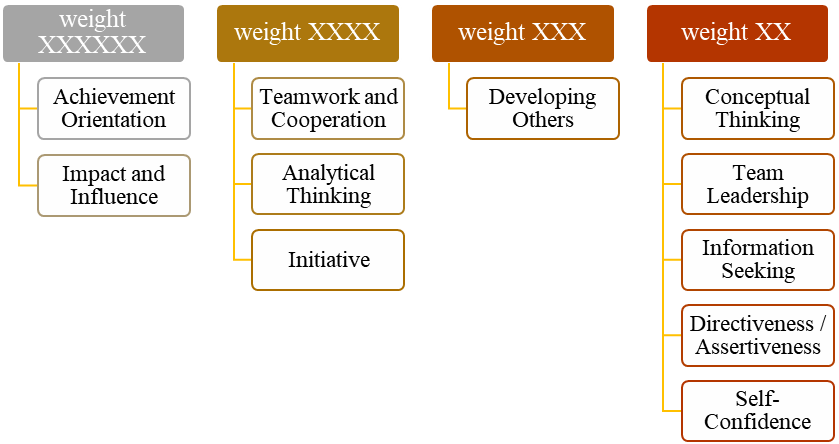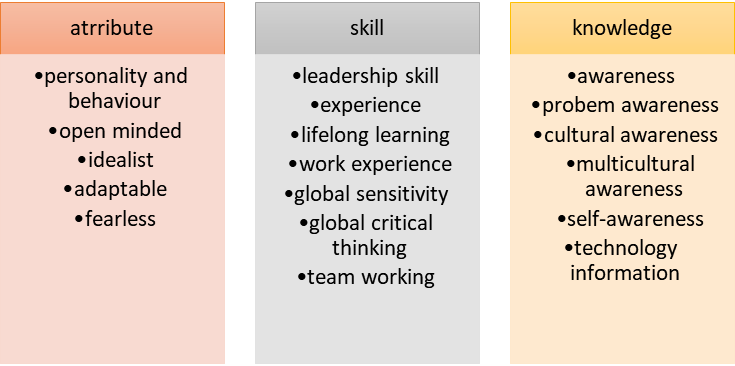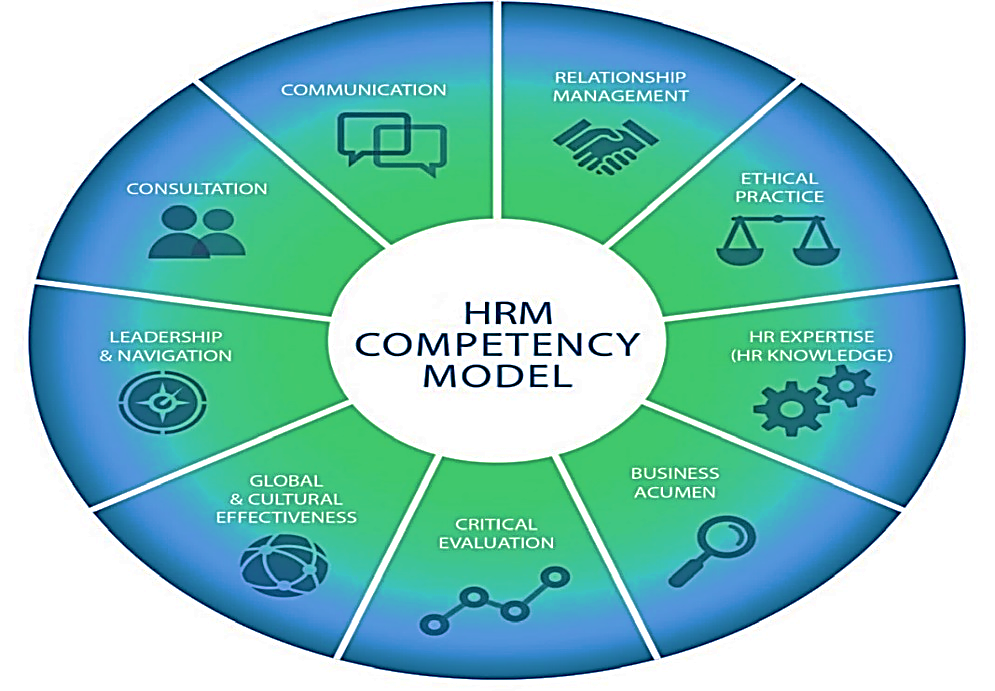Abstract
In a more and more culturally interconnected business world, it is necessary to conceptualize intercultural competency, to find out the practical methods of developing a professional competency model in the global economy and to theorize a comprehensive model that incorporates intercultural competency as an essential factor of professional competency improvement. In this article, intercultural competency is considered as an essential component in professional competency modelling. First, the concept of intercultural competency in today’s business environment is examined, and then the basics of professional model and intercultural competence model are discussed. After that, several professional models are scrutinized under the intercultural environment, and then attempts of adding intercultural components into the professional models are illustrated. Finally, it is concluded that it should be the tendency of professional competency development to integrate and synthesize intercultural competency into the existing model to produce a more comprehensive model that caters to today’s intercultural environment.
Keywords: Intercultural competency, international business, professional competency modelling
Introduction
The global economy is producing a more and more competitive landscape that is becoming increasingly complex, vigorous, and challenging for organizations that doing business across national borders and that stay inside geographic borders alike. For corporations, to gain a competitive advantage in the current international business environment depends increasingly on the individual and collective intercultural abilities to communicate competently with people and organizations from different cultural backgrounds.
Problem Statement
In this increasingly culturally diversified environment, for employees, an in-depth knowledge of the different cultural values and dimensions, as well a thorough understanding of the business style of the target culture are expected. Consequently, employees of all types much be equipped with intercultural competency, that is, the knowledge and skills to behave in a manner that is appropriate in a specific culture. In this way, successful businesses require more than the traditional competency lists of skills, attitudes and knowledge for their staff, and a separate and independent new cluster, the intercultural competency, should be integrated into the new and modified professional competency models. To find better ways to recruit and develop globally competent employees that can fill the global skill gaps becomes one of the most daunting tasks for the future development of companies. Intercultural competent employees, not limited to those with expatriate positions, are essential to an organization’s performance in a globalizing economy. Intercultural competency matters in today’s business world. In recent years, along with the globalization of world economy, the intercultural competency of individual employees from various multi-national and global enterprises is becoming increasing important. Traditional competency models often dwell on the job and inter-personal competencies and care little about the intercultural aspects of the professional competency. The author will try to provide a conceptual framework for incorporating intercultural competency into the professional competency model.
Research Questions
To contribute to the literature of professional competency modelling, this article will focus on three questions, the first is how to conceptualize intercultural competency in business environment. And then, the question as how to incorporate intercultural competency into the professional competency model is dealt with.
Purpose of the Study
The purpose of the study is to conceptualize intercultural competency in business environment, to find out the practical methods of developing a professional competency model in the global economy and to theorize a comprehensive model that incorporates intercultural competency as an essential factor of professional competency improvement.
Research Methods
The validity of research results is provided by the comprehensive analysis of extensive literature on intercultural competency and competency modelling. This approach to the study determined the application of general scientific methods (observation, induction/deduction, analysis/synthesis, systematization, classification) and proper specific research methods, including conceptual mapping.
Findings
In a world of increasing intercultural and international business interactions, one of the key to success is the ability to solve problems in a culturally appropriate way. Consequently, intercultural competency is regarded as essential for the 21st century workforce.
Conceptualizing intercultural competency
In the work performance literature, skill and competency were both used to indicate some qualities that are important for a successful worker. While “skill” is mainly associated with the working and learning requirements, in recent literature, competency is used rather than skill to show that skills and knowledge are interdependent. Thus, competency is conceptualized as the ability to adequately apply learning outcomes in a defined context (Ananiadou & Claro, 2009). This paper adopts the term competency to indicate the intertwined nature between skill and knowledge.
Griffiths and Washington (2015) in their book Competencies at Work: Providing a Common Language for Talent Management elaborates that “an individual competency describes a specific set of behaviours or performance indicators associated with a facet of exceptional performance in an organizational role. Each competency reflects a unique combination of knowledge, skills, abilities, and other factors that are driven and influenced by multiple traits and motivations, ultimately manifesting themselves in skilful behaviour” (p.4). In this regard, it is generally agreed that professional competencies are defined as the ability to perform a job successfully. Thus, they focus on the behaviours or conducts people show when performing the task.
Over the past few years the competency-based approach has become a standard framework to study the characteristics and actions of successful workers because competency is regarded as an essential factor that provides a better understanding of the success and growth of an employee. In this view, it is recognized that intercultural competency is essential in the increasingly globalized business environment.
Intercultural competency allows for successful bridging of differences in identifying, naming, prioritizing, and implementing values. The growth in the complexity and interconnectedness of contemporary individuals, groups, organizations, and entire societies requires frequent reflection on “what we are striving for” and which “equipment” we need to succeed in our striving. Intercultural competency cannot be reduced to the content of a crash course in doing business with partners from other countries. Intercultural competency should be understood as the ability to detect, understand and exploit cultural differences and intercultural communication differences manifested in all processes of organizing and in all managerial activities.
A short list of the components of intercultural communication was created by Gudykunst (2008), the first component in this model is mindfulness, which can be defined as the awareness of our own communication and the process of interaction with others. It is a kind of sensibility to anything different. The second one is cognitive flexibility, which indicates the ability to create new categories, to think outside of your own culture’s limitations. The third one is tolerance for ambiguity, which connotes the ability to behave calmly when facing confusing situations. The fourth one is behavioural flexibility, which is the essentially the ability of adapt, accommodate and adjust to unfamiliar circumstances. The fifth one is cross-cultural empathy which entails the ability to share other’s experience and connect emotionally with people from different background.
Assuming that the competencies and qualities discussed above are found in an individual and encouraged in an organization, then a high level of intercultural competency is present. The problem now lies in how to distinguish individual component intercultural competency. Here, the Behavioural Assessment Scale for Intercultural Competency (BASIC), which developed by Jolene Koester and Margaret Olebe, is selected (Lustig & Koester, 2010). A very simple philosophy lies behind the function of these BASIC skills: what you actually do, rather than your internalized attitudes or your projections of what you might do, is what others use to determine whether you are an intercultural competent employee. Thus in this model, an individual’s competency is appraised from seven behavioural aspects: display of respect means the ability to show respect and positive regard for another person; orientation of knowledge refers to the terms people use to explain themselves and the world around them; empathy is the capacity to behave as though you understand the world as others do; interaction management refers to skills in manipulating conversations; task role behaviour demonstrates behaviours associated with interpersonal harmony and mediation; tolerance for ambiguity is the ability to react to new and ambiguous situations without showing apparent discomfort; interaction posture is the quality to respond to others in descriptive, non-evaluative and non-judgmental ways.
Taking everything into account, in any intercultural interaction among workers of different cultural backgrounds, the major purpose exchange is to find a common ground, it may of the mutual ideas, information, customers and even partnerships among different parties. Both business in general and management in particular rely on people’s willingness and ability to convey meanings between different parties, for example, managers, employees, partners, suppliers, investors, and customers. Indeed, it can be argued that most efforts to build or to understand organizations begin with an understanding of basic communication and exchange processes. Therefore, intercultural competency can be defined as the ability that can bring about successful fulfilment of economic or business objectives in a way that is appropriate to the context. In other words, intercultural competency is a social judgement about how well an interaction goes, and it is specific as to the context and interpersonal relationships of the exchange.
Professional competency modelling
To gain a competitive advantage in today’s business environment depends more and more on the individual and collective intercultural abilities to communicate competently with people from different cultural backgrounds. Consequently, employees of all types much be equipped with intercultural competency, that is, the knowledge and skills to behave in a manner that is appropriate in a specific culture. In this way, successful businesses require more than the traditional competency lists of skills, attitudes and knowledge for their staff, and a separate and independent new cluster, the intercultural competency, should be integrated into the new and modified professional competency models.
There are many studies on professional competencies modelling. According to Mansfield, competency model is a detailed, behavioral specific description of the skills and traits that employees need to be effective in a job (Mansfield, 1996). While Lucia and Lepsinger (1999) stated that a competency model describes the particular combination of knowledge, skills, and characteristics needed to effectively perform a role in an organization and it is also used as a human resource tool for selection, training and development, appraisal, and succession planning. Combining the above definitions, a competency pyramid is introduced, which shows that a competency model deals with both surface competencies and innate competencies. In this pyramid, at the top is behaviour that includes mostly surface competencies, and then is followed by innate attributes including acquired skills and leaned knowledge, whereas on the foundation are core competencies like aptitude and personal characteristics (Mansfiled, 1996).
Competency models should identify the critical success factors that lead to superior performance in organizations. HR professionals who are seeking a broad, quick, and consistent impact for competency modelling often adopt the generic competency approach, which defines one set of competencies for a broad range of jobs and those sets of categorized competencies are called clusters or blocks (Griffiths & Washington, 2015). Figure 1 represents an example of the generic model in which the generic competencies of a manager are represented in competency clusters.

Now, the question lies in how to incorporate and integrate the intercultural components into the existing professional models. In a study of global leadership competency models, the researchers confirmed that nowadays, the most frequently mentioned global leadership competencies are intercultural skills and awareness (Park et al., 2017). Figure 2 is a recent attempt made by scholars to incorporate intercultural competency into the generic professional model (Hassanzadeh et al., 2015).

In the above model, the traditional three-way division of attribute, knowledge and skill is maintained, but under each of these three categories, some intercultural elements are included, both implicitly and explicitly. The advantage of such model is that it retained the traditional division of competency clusters and thus make it easier to understand, however, it has not accentuated the intercultural competency enough. A more thorough integration of and a greater emphasis on the intercultural competency are needed.
Figure 3 is a HRM Competency Model that is structured in a different way. In this model, composed by the Society for Human Resource Management, among all the nine cluster of competencies, there is one worth special attention (Shrm, 2018). That one is labelled as global and cultural effectiveness, with an independent cluster devoted to intercultural competence, it highlights the importance of such competency in professional competency modelling.

In the above model, an independent block is devoted to intercultural competence, in this way, the importance of such competence is recognized and is easily grasped. This way of modelling could be a direction of future professional competency models in the intercultural environment.
Conclusion
All in all, professional competency models in today’s business environment need emphasize more on the intercultural competency elements. The author suggests that, to build up plausible professional models that are compatible with the cultural diversity of this globalizing world, it is necessary to integrate intercultural competence components into the existing models, and an improved competency model with a cluster devoted solely to intercultural competence is the preferable solution in competency modelling. However, to discuss professional competency, it is not sufficient to just dwell on the personal and interpersonal levels, and intercultural managerial competencies under specific culture also need carefully considerations in future studies.
References
Ananiadou, K., & Claro, M. (2009). 21St century skills AND COMPETENCES for new Millennium learners in OECD COUNTRIES. OECD Education Working Papers. DOI:
Griffiths, B., & Washington, E. (2015). Competencies at work: Providing a common language for talent management. Business Expert Press.
Gudykunst, W. B. (2008). Bridging differences: Effective intergroup communication. Thousand Oaks, CA: Sage Publications.
Hassanzadeh, M., Daud, S., Abu, A., & Azizan, W. N. (2015). Global Leadership Competencies. Journal of Educational and Social, 7. Research. DOI:
Lucia, A. D., & Lepsinger, R. (1999). The art and science of competency models: Pinpointing critical success factors in organizations. Jossey-Bass/Pfeiffer.
Lustig, M. W., & Koester, J. (2010). Intercultural competence: interpersonal communication across cultures. Allyn and Bacon.
Mansfield, R. S. (1996). Building competency models: Approaches for HR professionals. Human Resource Management, 35(1), 7-18. DOI:
Park, S., Jeong, S., Jang, S., Yoon, S. W., & Lim, D. H. (2017). Critical Review of Global Leadership Literature: Toward an Integrative Global Leadership Framework. Human Resource Development Review, 17(1), 95-120. DOI:
Shrm. (2018). SHRM Competency Model. https://www.shrm.org/learningandcareer/career/pages/shrm-competency-model.aspx
Spencer, L. M., & Spencer, S. M. (1993). Competence at Work: Models for Superior Performance. John Wiley & Sons Inc.
Copyright information

This work is licensed under a Creative Commons Attribution-NonCommercial-NoDerivatives 4.0 International License.
About this article
Publication Date
25 September 2021
Article Doi
eBook ISBN
978-1-80296-115-7
Publisher
European Publisher
Volume
116
Print ISBN (optional)
-
Edition Number
1st Edition
Pages
1-2895
Subjects
Economics, social trends, sustainability, modern society, behavioural sciences, education
Cite this article as:
Wang, C. (2021). Intercultural Competency As An Essential Component Of Professional Competency Modelling. In I. V. Kovalev, A. A. Voroshilova, & A. S. Budagov (Eds.), Economic and Social Trends for Sustainability of Modern Society (ICEST-II 2021), vol 116. European Proceedings of Social and Behavioural Sciences (pp. 2254-2260). European Publisher. https://doi.org/10.15405/epsbs.2021.09.02.252

